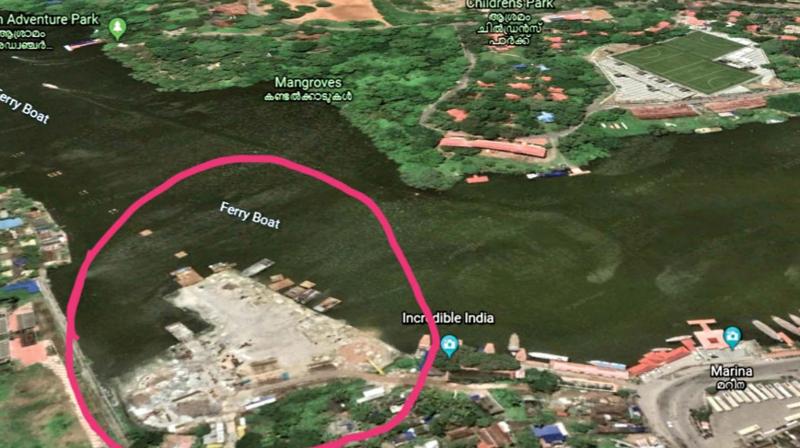Ravaged Ashtamudi in poll focus
Rather than preserve lake, officials blindly give nod to destroy it through unscientific construction.;

Kollam: As the political parties face another general election, conserving the polluted Ashtamudi Lake has yet again found a place in their election propaganda as well.
The water in the lake has turned even murkier with the authorities responsible for maintaining its fragile ecosystem give the nod to fill it by destroying mangroves and construct a ring road extension.
The government machinery itself does it blatantly violating rules to conserve the environment.
Even environmental clearance from the State Wetland Authority of Kerala has not been obtained for the construction violating CRZ norms and Ramsar site convention.
A counter affidavit filed by Veena N. Madhavan IAS, member secretary of the State Wetland Authority of Kerala (SWAK) before the Kerala High Court on a PIL questioning it states the constructed area falls under the Ashtamudi wetland, a protected wetland under Ramsar convention.
Any change in the existing wetland ecosystem will affect the healthy existence of the system in all environmental spheres, including the various stakeholder communities.
The affidavit also admits the construction of the road is permanent and is the violation of rules.
The Wetland (Conserva-tion and Management) Rules 2010 allows only boat jetties within fifty meters from the mean high flood level observed in the past ten years.
Rule 4(1)(vii) prohibits any other activity likely to hurt the ecosystem of the wetland to be specified in writing by the Authority constituted by these rules.
With these, prior approval is mandatory for any construction activity in the Ashtamudi Lake site.
The lake received Ramsar designation in 2002 as site number 1204. Since it was categorised as ‘Wetlands of Interna-tional Importance’ under it, Wetlands (conservation and management) Rules 2017 applies.
The SWAK has revealed no authorities have approached the wetland authority seeking environmental clearance at the time of commencement of construction.
No study to assess the environmental impact, as per the mandate, has been conducted in the site before the construction, as per an RTI reply from the SWAK.
The Kerala Coastal Zone Management Authority (KCZMA) also maintained the office holds no details on the permission for construction as part of phase III of link road extension.
Environmentalist V.I. Rahul filed the PIL saying it would severely affect its already disturbed and damaged ecosystem.
The SWAK, KCZMA, district collector, corporation, Directorate of Environment and Climate Change, PWD, and the state government are respondents.
“Not even a proposal on road construction has been submitted to the wetland authority or the KCZMA. It's a gross violation,” Mr Rahul told DC.
“There is no effective waste management system for the corporation. The Lake will eventually turn into a waste dump once the road comes up.”
The `254.4 cr road of 2.75 km is to ease the traffic along the 1.6 km stretch connecting collectorate junction, high school junction, and Kollam bus stand, which the bypass has made irrelevant.
Though the authorities claim the construction is on pillars, the tidal flow of water is likely to get affected.
The Lake has also been extensively filled in bus stand junction and Olayilkkadavu areas.
The construction from Kollam KSRTC terminal to Thoppilkadavu via Olayil Kadavu is entirely through the lake and pillars have been erected up to Olayil Kadavu for Phase III. Phase IV involves a flyover from Olayil Kadavu to Thoppilkadavu.
The state’s first Ramsar site has lost almost 27 square km in the last decade and shrunk to just 34.4 sq.km from an initial area of 61.4 sq.km.
Further encroachments will result in its permanent destruction.

